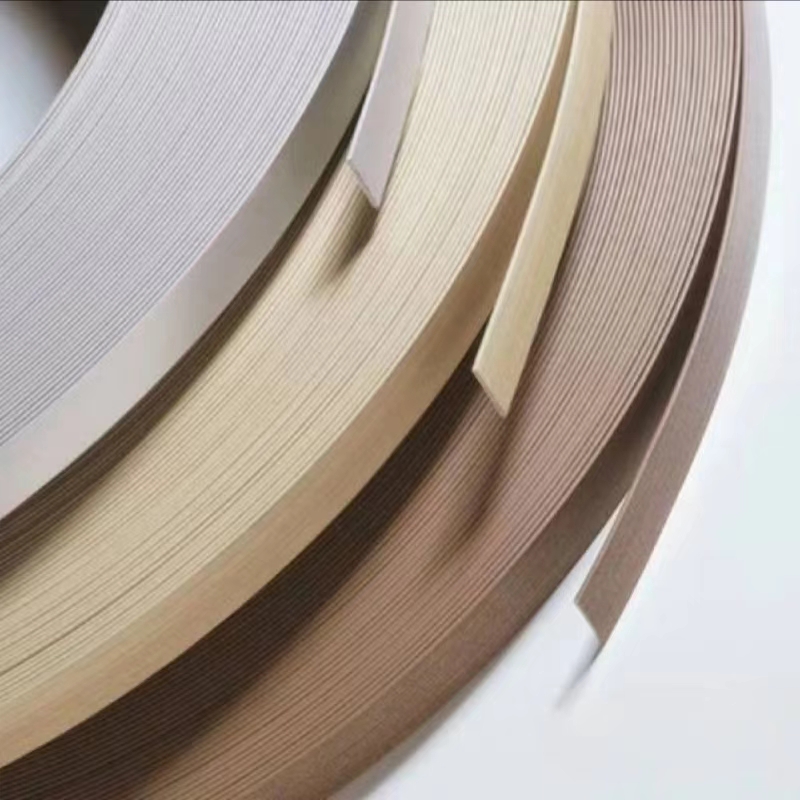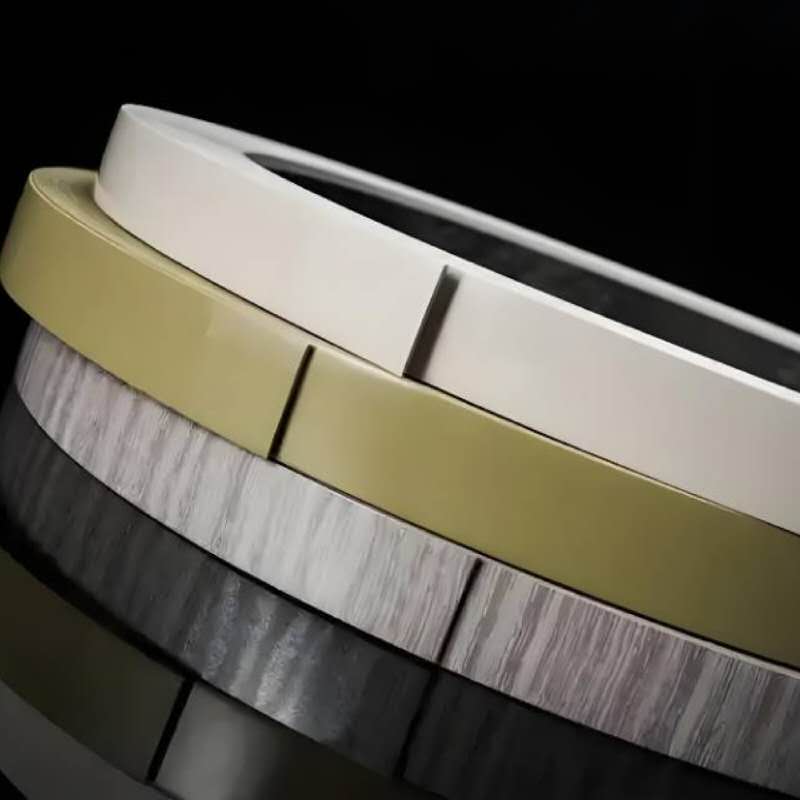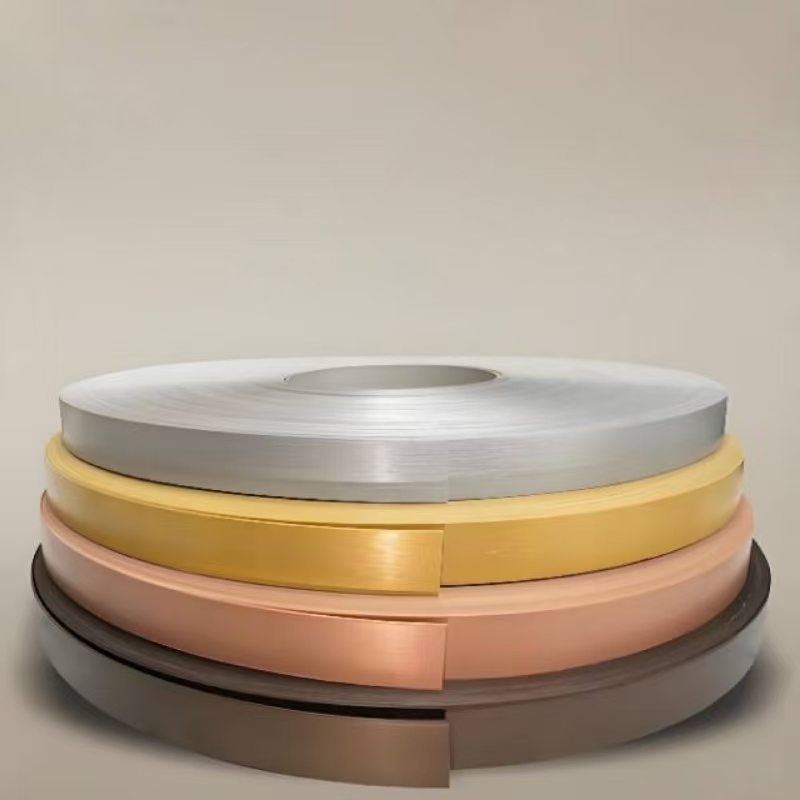Tingjie Redefines Edge Banding Landscape with Eco-Friendly, Textured, and Customizable Solutions for Modern Design Demands
In the ever-evolving world of furniture manufacturing and interior architecture, edge banding has evolved from a functional necessity to a creative cornerstone. At the forefront of this evolution is Tingjie, a company that has reimagined what edge banding can achieve—especially with its trio of innovations: eco-friendly edge banding, textured edge banding, and customizable edge banding. These offerings are not just products; they are catalysts for design freedom, sustainability, and tactile innovation, reshaping how industries approach  finishing touches for panels and furniture.
finishing touches for panels and furniture.
The Rise of Purpose-Driven Edge Banding
Edge banding, once a mere afterthought, now dictates the longevity, aesthetics, and ecological footprint of furniture and interior spaces. For manufacturers and designers, the choice of edge banding is no longer just about functionality—it’s about aligning with brand values, consumer preferences, and global sustainability goals. This is where Tingjie’s specialized range steps in, addressing three critical market needs with its eco-friendly edge banding, textured edge banding, and customizable edge banding.
Eco-Friendly Edge Banding: Sustainability at Its Core
Sustainability is no longer a trend but a business imperative, and Tingjie’s eco-friendly edge banding leads the charge in green manufacturing. Crafted from recycled materials and low-impact polymers, these edge banding solutions prioritize environmental responsibility without compromising performance.
“Our eco-friendly edge banding is designed for brands that want to deliver quality while reducing their carbon footprint,” explains a Tingjie product development executive. The company’s manufacturing process for eco-friendly variants emphasizes waste reduction, energy efficiency, and the use of non-toxic adhesives. Unlike conventional edge banding that may leach harmful chemicals, Tingjie’s eco-friendly options meet stringent global sustainability certifications, making them ideal for LEED-certified buildings, eco-conscious homes, and brands targeting environmentally aware consumers.
The demand for eco-friendly edge banding has surged in sectors like hospitality and residential design, where clients increasingly prioritize green materials. Tingjie’s eco-friendly line includes options for every design style—from sleek modern whites to organic wood grains—proving that sustainability and aesthetics need not be mutually exclusive.
Textured Edge Banding: Tactile Innovation for Sensory Design
In an era where design is as much about touch as it is about sight, Tingjie’s textured edge banding introduces a new dimension to furniture and panel design. These aren’t just smooth strips; they’re crafted to mimic the feel of natural materials like linen, stone, or rough-sawn wood, adding a tactile layer that elevates user experience.
“Textured edge banding is about engaging the senses,” notes a Tingjie design specialist. “It transforms a piece of furniture from something you look at into something you interact with.” Applications are vast: a hotel lobby’s reception desk might feature stone-textured edge banding for a luxurious, organic feel, while a retail display could use fabric-textured edge banding to create a warm, inviting atmosphere.
Tingjie’s textured edge banding is engineered for durability, ensuring that the tactile patterns resist wear even in high-traffic environments. The company’s R&D team continuously experiments with new textures, from subtle micro-grooves to bold 3D patterns, giving designers a playground of options to craft truly unique pieces.
Customizable Edge Banding: Tailored to Every Vision
No two projects are the same, and Tingjie’s customizable edge banding embraces this reality. Whether a client needs a precise color match to a Pantone shade, a logo embossed into the banding, or a bespoke texture for a signature collection, Tingjie delivers.
The customization process begins with a collaborative consultation, where Tingjie’s team works with clients to map out every detail—from material composition to finish. For a luxury furniture brand, this might mean creating a metallic-hued, laser-etched customizable edge banding to match their brand identity. For a commercial office project, it could involve批量生产 (bulk-producing) edge banding in a corporate color palette with a matte finish.
“Customizable edge banding is about empowering designers to realize their exact vision,” says a Tingjie account manager. The company’s state-of-the-art manufacturing facilities can handle both small-batch custom orders and large-scale production runs, ensuring flexibility for projects of any size. This level of customization has made Tingjie a trusted partner for boutique studios and multinational corporations alike.
can handle both small-batch custom orders and large-scale production runs, ensuring flexibility for projects of any size. This level of customization has made Tingjie a trusted partner for boutique studios and multinational corporations alike.
Tingjie’s Unified Approach: Quality, Innovation, and Accessibility
What unites Tingjie’s eco-friendly edge banding, textured edge banding, and customizable edge banding is a relentless focus on quality. Each product undergoes rigorous testing for durability, colorfastness, and adhesion, ensuring they perform in real-world conditions—whether in a humid bathroom, a bustling retail space, or a high-end residential living room.
The company’s global reach is a testament to this quality. Tingjie exports its edge banding solutions to over 70 countries, with dedicated teams in Europe, North America, and Asia to support local markets. “We understand that different regions have unique regulatory and design preferences,” notes a Tingjie international sales director. “Our edge banding—be it eco-friendly, textured, or customizable—is adapted to meet local standards while maintaining our global commitment to excellence.”
The Future of Edge Banding: Where Tingjie Leads
As design trends lean into sustainability, sensory experiences, and personalization, Tingjie is already ahead of the curve. The company is investing in research for eco-friendly edge banding made from biodegradable materials, exploring smart textures for textured edge banding that interact with light, and developing AI-driven tools to streamline the customizable edge banding design process.
“Our goal is to make edge banding a catalyst for innovation, not just a finishing touch,” summarizes a Tingjie executive. For brands and designers looking to stand out in a crowded market, Tingjie’s trio of eco-friendly edge banding, textured edge banding, and customizable edge banding offers a path to create products that are sustainable, sensory, and distinctly their own.
In conclusion, Tingjie’s commitment to redefining edge banding through eco-consciousness, tactile innovation, and bespoke customization has positioned it as an industry leader. As the demand for purpose-driven design solutions grows, Tingjie’s eco-friendly edge banding, textured edge banding, and customizable edge banding will continue to set the standard for what edge banding can achieve—proving that even the smallest details can make the biggest impact.




